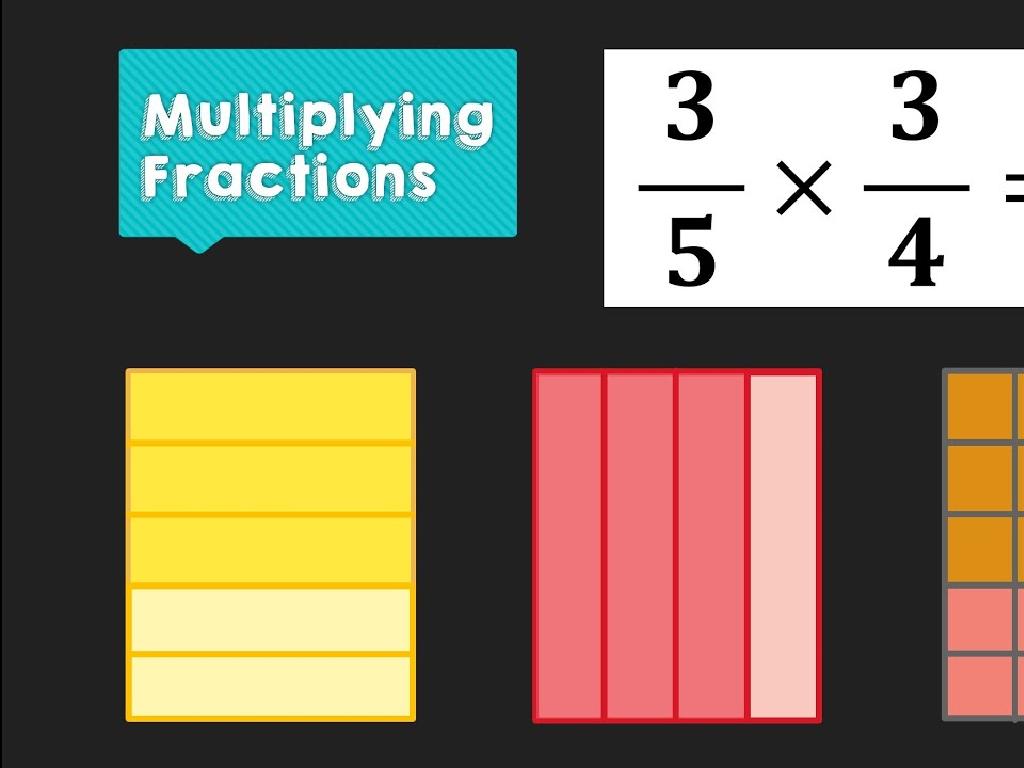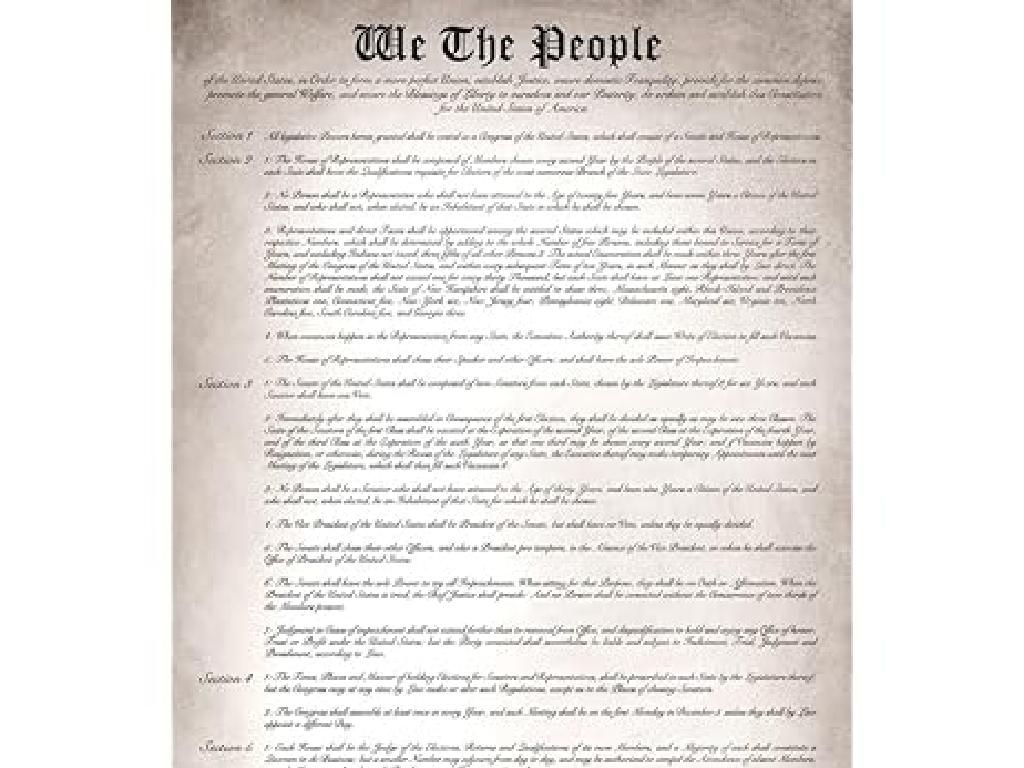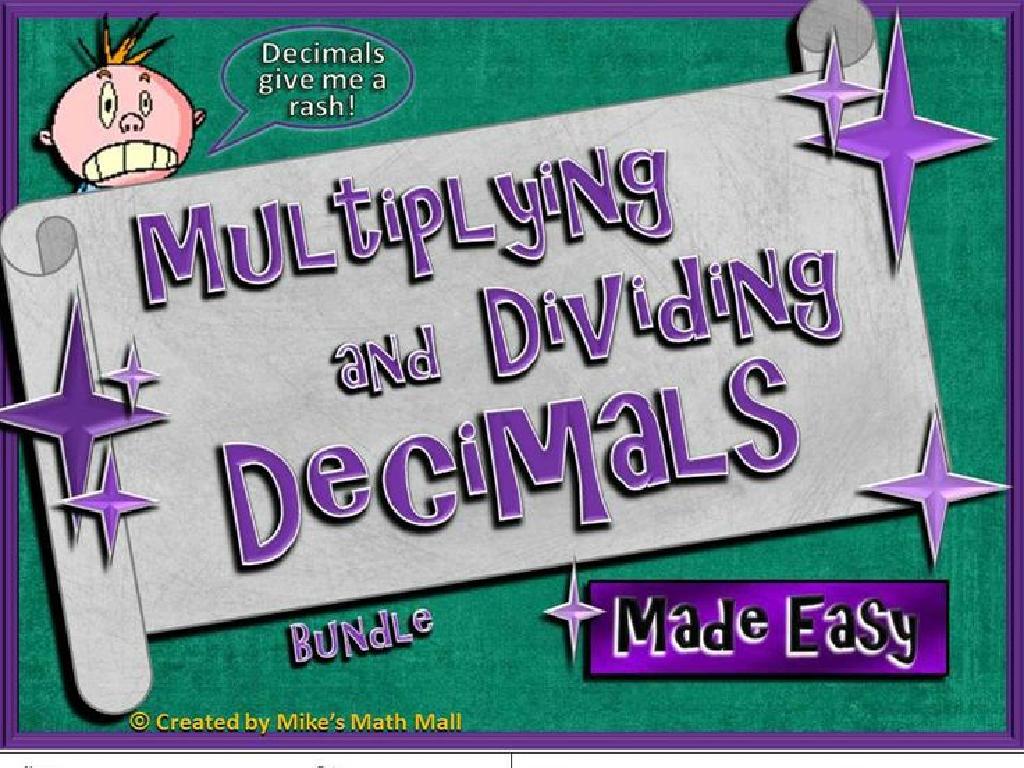Add Near Doubles
Subject: Math
Grade: Second grade
Topic: Addition Strategies: One Digit
Summary: This engaging second grade math presentation teaches addition using the near doubles strategy, helping students quickly add numbers that are just one apart. By connecting known doubles such as 4+4 to solve problems like 4+5, students build math fluency and confidence. Through interactive games, real-life object hunts, and practice activities, learners discover how to use doubles facts to solve near doubles efficiently, building a solid foundation for mental math mastery.
Please LOG IN to download the presentation. Access is available to registered users only.
View More Content
Adding Near Doubles
– Learn about near doubles
– Quick addition of similar numbers
– Numbers like 4 and 5 are close in value, making them ‘near doubles’.
– Strategies for near doubles
– Use doubles you know to add numbers faster.
– Practice with examples
– Example: 6 + 7 is like 6 + 6 + 1.
|
This slide introduces the concept of adding near doubles, which is a useful mental math strategy for second graders. It’s important to explain that near doubles are two numbers that are close in value, such as 4 and 5. Teach students to use known doubles to add near doubles more quickly. For instance, if they know that 6 + 6 = 12, then they can easily find that 6 + 7 is just one more, so 6 + 7 = 13. Provide several examples and encourage students to practice this strategy with different number pairs. This will help them build confidence and speed in their addition skills.
Understanding Doubles in Addition
– Doubles are pairs of the same number
– Examples: 2+2, 3+3, 4+4
– Like two apples plus two apples equals four apples
– Doubles are simple to memorize
– Doubles help with near doubles
– Knowing 3+3 helps solve 3+4
|
This slide introduces the concept of doubles in addition, which is a foundational strategy for learning near doubles. Emphasize that doubles are simply two identical numbers added together, and they are easy to remember because of their repetition. Use tangible examples like adding apples to make it relatable for second graders. Highlight how mastering doubles can make it easier to understand and solve near doubles problems, such as 3+4, by building on the known double 3+3. Encourage students to practice doubles as they will serve as a stepping stone to more complex addition strategies.
Understanding Near Doubles
– What are near doubles?
– Numbers close to each other, like friends!
– Example: 3 + 4
– 3 and 4 are buddies, just 1 apart
– Use doubles to solve near doubles
– If you know 3 + 3, then 3 + 4 is just one more!
– Practice with near doubles
– Let’s try some together: 5 + 6, 2 + 3
|
This slide introduces the concept of near doubles to second-grade students, an addition strategy that helps them solve sums quickly. Near doubles are pairs of numbers that are close to each other, typically one number apart. By using what they already know about doubles (e.g., 3 + 3), students can easily add near doubles by simply adding one more (e.g., 3 + 4). Encourage students to think of near doubles as number buddies. Provide several examples and practice opportunities to reinforce the concept. During the lesson, guide students through the process of identifying near doubles and using their knowledge of doubles to find the sum.
Using Doubles to Add Near Doubles
– Start with a doubles fact you know
– Like 4+4 is a double fact we know
– Find a near double problem
– 4+5 is just one more than 4+4
– Add one more to the double fact
– Since 4+4=8, we add one to get 4+5
– Discover the answer to near doubles
– So, 4+5 equals 8+1 which is 9!
|
This slide introduces the concept of using known doubles to solve near doubles addition problems. It’s a strategy that helps students build on their existing knowledge of doubles to solve similar problems. By recognizing that a near double is just one more than a known double, students can quickly and accurately find the sum. For example, if they know that 4+4 equals 8, then they can deduce that 4+5 will be one more, which is 9. Encourage students to practice this strategy with different numbers and to share their methods with the class. This will help them become more confident in their addition skills.
Let’s Practice Together: Adding Near Doubles
– Example 1: If 6+6=12, what’s 6+7?
6+6 is a double, so 6+7 is just one more!
– Example 2: If 3+3=6, what’s 3+4?
3+3 is a double, so 3+4 is one more than the double.
– Use doubles to find the answer
– Add one more to the double
|
This slide is designed to help students practice the concept of adding near doubles. Start by reviewing what doubles are (the same number added to itself) and then show how to use this knowledge to solve near doubles. For example 1, explain that since they already know 6+6, they just need to add one more to get the answer for 6+7. Similarly, for example 2, use the double 3+3 to find 3+4. Encourage students to always think of the nearest double they know and then adjust by adding or subtracting one. This strategy simplifies the addition process and enhances mental math skills. During the class, provide additional examples and allow students to work through them, either individually or in pairs, to reinforce the concept.
Activity Time: Near Doubles Hunt
– Pair up for a doubles hunt
– Find classroom objects for near doubles
– Look for items like 2 pencils and 3 pencils
– Record your findings on flashcards
– Write ‘2+2’ for doubles and ‘2+3’ for near doubles
– Share your doubles discoveries
– Discuss how near doubles relate to doubles
|
This activity is designed to help students understand the concept of near doubles through a fun and interactive classroom hunt. By working in pairs, students will search for objects that can represent doubles and near doubles, such as two pencils and three pencils. They will then use flashcards to write down the doubles (e.g., 2+2) and near doubles (e.g., 2+3) they find. After the hunt, students will share their findings with the class, discussing how near doubles are simply one more or one less than exact doubles. This reinforces their addition skills and understanding of number relationships. For the teacher: Prepare flashcards in advance, ensure students understand the task, and facilitate the sharing session to ensure each pair has the opportunity to present.
Mastering Near Doubles
– Congratulations on learning near doubles!
– Use doubles to help with near doubles
– If you know 6+6, then 6+7 is just one more!
– Practice to perfect near doubles
– Try with different numbers to get better
– Keep practicing for mastery
|
This slide is a conclusion to reinforce the concept of near doubles. Emphasize the importance of using known doubles to make adding near doubles easier. For example, if a student knows that 6+6=12, then figuring out 6+7 can be done by simply adding one more to the sum of the doubles. Encourage the students to practice with a variety of numbers to become more comfortable with this strategy. Remind them that practice is key to mastering any math skill, and the more they work with near doubles, the quicker they’ll be able to add them. You can suggest fun practice activities like math games or flashcards to make learning more engaging.
Class Activity: Near Doubles Bingo
– Play Bingo with near doubles
– Solve near doubles to cover spaces
– Example: If you have 4+5, think of 4+4 then add 1 more
– Aim for five in a row on your card
– Win a sticker for Bingo!
|
This interactive Bingo game is designed to help second graders practice and reinforce their understanding of near doubles in addition. Each student will receive a Bingo card with answers to near doubles problems. As you call out near doubles equations, students will solve them and cover the corresponding answer on their cards. The first student to cover five answers in a row horizontally, vertically, or diagonally wins a sticker. Encourage students to use their knowledge of doubles to find near doubles quickly. For example, if the problem is 4+5, they should think of the double 4+4=8 and then add one more to get 9. Prepare several rounds of the game to give multiple students the chance to win and ensure everyone gets ample practice.





